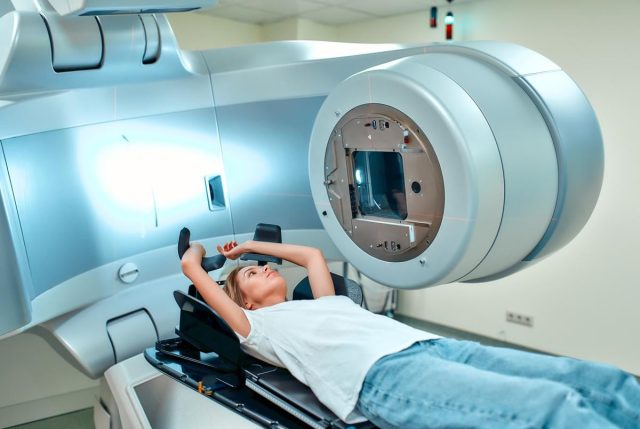Safety profile, cosmesis, quality of life improved for MHF versus conventional fractionation
By Elana Gotkine HealthDay Reporter
MONDAY, Sept. 16, 2024 (HealthDay News) — For patients with breast cancer, moderate hypofractionation (MHF) shows an improved safety profile, cosmesis, and quality of life compared with conventional fractionation (CF), with equivalent oncologic outcomes, according to a study published online Sept. 11 in The BMJ.
Shing Fung Lee, M.B.B.S., from the National University Hospital in Singapore, and colleagues conducted a systematic review and meta-analysis of randomized controlled trials focusing on CF (daily fractions of 1.8 to 2 Gy reaching 50 to 50.4 Gy), MHF (2.65 to 3.3 Gy for 13 to 16 fractions), and/or ultra-hypofractionation (UHF; schedule of five fractions) for breast cancer. Fifty-nine articles representing 35 trials with 20,237 patients were assessed.
The researchers found that for MHF versus CF, the risk ratios for grade ≥2 acute radiation dermatitis were 0.54 and 0.68 following breast-conserving therapy and mastectomy, respectively. Hyperpigmentation and grade ≥2 breast shrinkage occurred less often after MHF than CF, with risk ratios of 0.77 and 0.92, respectively, in the combined breast-conserving therapy and mastectomy population. Differences in hyperpigmentation and breast shrinkage were not statistically significant in the breast-conserving therapy-only trials. For breast-conserving therapy and mastectomy populations combined, the risk ratio for grade ≥2 acute radiation dermatitis was not significantly different for UHF versus MHF. Compared with CF, MHF was associated with improved cosmesis and quality of life, while data on UHF were less conclusive. Similar survival and recurrence outcomes were seen for UHF, MHF, and CF.
“These findings justify the wider adoption of moderate hypofractionation as the preferred approach, given its balance of therapeutic efficacy and improved safety,” the authors write.
Several authors disclosed ties to the pharmaceutical industry.
Copyright © 2024 HealthDay. All rights reserved.



















